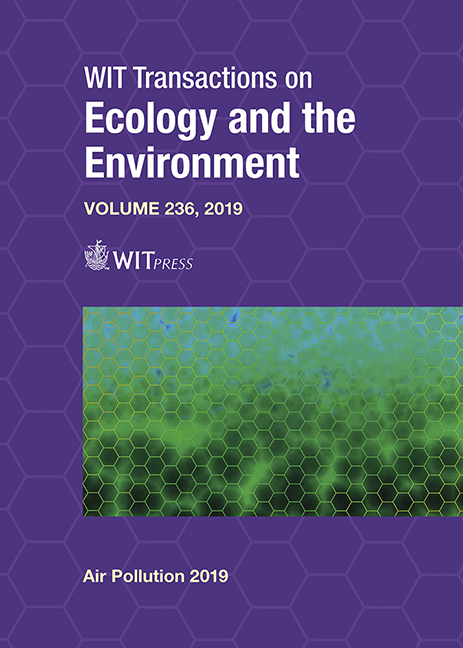ESTIMATION OF FUEL LOSS AND SPATIAL–TEMPORAL DISPERSION OF VEHICULAR POLLUTANTS AT A SIGNALIZED INTERSECTION IN DELHI CITY, INDIA
Price
Free (open access)
Transaction
Volume
236
Pages
11
Page Range
233 - 243
Published
2019
Size
346 kb
Paper DOI
10.2495/AIR190231
Copyright
WIT Press
Author(s)
RAJNI DHYANI, NIRAJ SHARMA, MUKTI ADVANI
Abstract
Vehicular traffic is considered one of the major contributors to urban air pollution in a city like Delhi. Signalized traffic intersections are considered as urban hotspots due to their high air pollution levels which generally exceed the air quality standards specified by the regulatory agencies. The high air pollution levels mainly result from the idling of a large number of motor vehicles at these signalized intersections resulting in fuel losses and corresponding emissions leading to deteriorating air quality. There are ~950 signalized traffic intersections in Delhi city. A large number of the population works and lives close to these traffic intersections and are exposed to these air pollutants. Therefore, it becomes imperative to understand the spatial–temporal distribution of vehicular emissions resulting because of the idling of motor vehicles at these intersections. In the present study, the fuel loss estimation due to the idling of vehicles was carried out at Lodhi Road intersection using idling fuel consumption data carried out on various test vehicles representing the Delhi traffic. The fuel loss was converted into emissions using fuel-based Intergovernmental Panel on Climate Change (IPCC) emission factors. The emissions have been estimated in terms of greenhouse gas (CO2, CH4, and N2O) emissions and indirect greenhouse gas (CO, NOx, and NMVOC). The results indicated that daily there was ~230 litre of petrol, ~100 litre of diesel and ~170 kg of compressed natural gas (CNG) loss due to idling at Lodhi Road intersection. The resultant emissions load estimated was ~1300 kg of CO2, 13 kg of NOx, 90 kg of CO per day. The spatial extent of vehicular pollutant has been assessed with the help of the CAL3QHC model.
Keywords
emissions, fuel loss, idling, signalized intersection, CAL3QHC model





